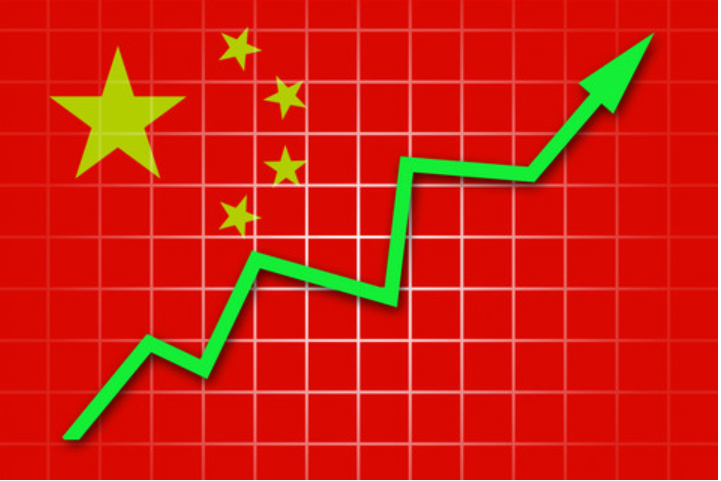ABN Amro tager et view over Kinas succes med at bekæmpe coronaen. Det fejrer kineserne med mådehold, dvs. med færre rejser end normalt til det kinesiske nytår. Selv om Kinas ledelse har været førende i at bekæmpe coronaen, så halter Kina bagefter med vaccinationerne, der dog heller ikke er så påtrængende som i Europa og USA. Væksten er høj, og industriproduktionen er på før-corona niveauet, mens det hjemlige forbrug er bagefter. Kina ventes at få langt højere vækstrater end USA i de kommende år, men tempoet tager af i 2022.
China – A different way of celebrating New Year
- China again successful in quickly containing new outbreaks
- No travel spike this Lunar New Year, but there are other ways to spend
- China is a leader in pandemic control, but a laggard in its vaccination roll-out
- Q1-21: Bumper annual growth, weak quarterly growth
210223-Short-Insight-China-.pdf (218 KB)
1. China again successful in quickly containing new outbreaks
Getting the pandemic under control relatively quickly has been the crucial factor explaining China’s outperformance, being the only key economy posting positive annual growth last year (+2.3%), also see our China 2021 Outlook published last month. Obviously, China also experienced virus flare-ups, but so far these have been small and were met by quick and targeted measures keeping contagion in check. As a result, these flare-ups have not proven to be a real game changer in terms of the broad economic recovery to the same extent as in other key economies, although they have formed a drag on consumption growth. In late 2020/early 2021, China was faced with another round of flare-ups, with new confirmed covid-19 cases reaching a nine-month high of 342 on 22 January (still very low in an international context). The authorities have again reacted swiftly and decisively, by imposing new regional lockdowns (concentrated in the north east), re-tightening travel restrictions in the run-up to the Lunar New Year holiday and several rounds of mass testing. These measures seem to have worked well again, as the 7-day average of new daily cases has fallen from around 200 mid January to around 20 over the past few days.
2. No travel spike this LNY, but there are other ways to spend
Traditionally, around 400 million Chinese travel during the Lunar New Year holiday break (of which the timing changes from year to year) to meet their family and friends. Following the recent virus flare-ups, the government introduced new mobility restrictions and urged people to refrain from travelling during the holiday (this year scheduled for mid- February). As a result, passenger transport has been at similarly low levels to those of one year ago, after lockdowns were imposed (in January 2020) and mobility restrictions were tightened following the first outbreak of covid-19 in China. This year, the total number of people travelling over the Lunar New Year holiday period was around 25% of the pre-covid-19 levels seen in 2019. Data on tourism also showed significant declines compared to pre-corona levels. At the same time, other data point to some substitution from travel and tourism to other consumption categories (including online sending of gifts). The sharp increase of spending on theatres and restaurants suggests that the recent decline in new case numbers has helped to stem contagion fears, although the preference for online shopping is still higher than it was pre-pandemic.
3. Leader in pandemic control, laggard in terms of vaccination roll-out
The downside of China’s success in keeping pandemic contagion in check is a lack of urgency on the vaccination front. Currently 2.8 vaccinations per 100 people (single dose) are reported for China. This is much lower than front runners Israel, UAE and UK, but also lower than some other key developed (e.g. US, Germany, France, Netherlands) and emerging economies (e.g. Turkey, Poland). China’s vaccination roll-out took off in mid December 2020, starting with key worker groups, followed by vulnerable segments before widening to all people over 60 years old. Beijing’s goal to have 50 million people inoculated before the LNY holiday has been extended to end-March, due to logistical issues as well as some hesitance within the population to get inoculated. All in all, China will likely reach herd immunity later than most other key economies, and may therefore be susceptible longer to potential virus flare-ups. Still, with China being ahead in terms of pandemic control and economic ‘normalisation’, success of the vaccination programme is most probably less of a ‘make or break factor’ for the overall macro outlook compared to most developed economies.
4. Q1-21: bumper annual growth, weak quarterly growth
Although China is well ahead in terms of economic normalisation following the covid-19 collapse in Q1-2020, its recovery has mainly been driven by the supply-side (industry and exports). Consumption has caught up from the covid-19 shock as well, but is lagging, with social distancing sensitive sectors such as transport still struggling. We expect weak quarterly growth in Q1-20, a view confirmed by the sharp drop in the January PMIs (particularly for services). This weakness is partly driven by the impact of the new regional lockdowns and tighter mobility restrictions, but also by the projected decline in the contribution of net exports and the turn in the policy cycle. China’s exports have shown a remarkable outperformance over the past year, partly reflecting a global demand shift from services to goods, and specific pandemic-related demand for medical supply, computer products and online shipping. However, this outperformance seems to have contributed to some logistical bottlenecks, indicated by a surge in freight rates from Chinese ports, and longer delivery times. These bottlenecks seem to have already impacted China’s short-term export prospects, with PMI export subindices dropping sharply in January. In annual terms we expect bumper growth in Q1-21, but that mainly reflects the low base in Q1-20 (when lockdowns and nationwide safety restrictions triggered an historic GDP contraction of -6.8% yoy).
















